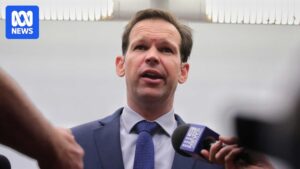
Got $75,000 and never owned a home? The Albanese government is here to underwrite your $1.5 million Sydney property purchase through its newly relaxed and expanded Home Guarantee Scheme. This initiative, aimed at first-home buyers, has stirred both excitement and controversy across Australia.
First-home buyers in other cities face different thresholds: $50,000 for a $1 million property in Canberra or Brisbane, $47,500 for $950,000 in Melbourne, $45,000 for a $900,000 dwelling in Adelaide, and $35,000 for a $700,000 home in Tasmania. The scheme, originally created by the previous Coalition government, has been dramatically expanded by the Albanese administration, raising questions about its long-term impact on the housing market.
Understanding the Home Guarantee Scheme
The Home Guarantee Scheme assists first-home buyers by reducing the usual 20 percent deposit required by banks to just 5 percent, significantly cutting the time needed to save for a deposit. Importantly, this does not require direct taxpayer spending. Instead, the government’s guarantee acts like mortgage insurance, de-risking the mortgage for banks.
If a homeowner defaults and the forced sale does not cover the loan, taxpayers will cover any shortfall up to 15 percent of the original purchase price. This setup makes the mortgage a secure bet for lenders, with minimal immediate financial risk to the government.
Potential Risks and Benefits
The scheme is a boon for first-home buyers eager to enter the property market. Those who can manage a mortgage worth 95 percent of the purchase price and build a capital appreciation buffer stand to benefit significantly. Additionally, the “banks of mum and dad,” often the source of deposit funds, may feel relieved from the pressure of tapping into their savings or superannuation.
However, the scheme poses risks for buyers who might struggle to service their mortgage, potentially leading to foreclosure. Critics argue that the government guarantee primarily benefits banks rather than homeowners in distress.
Policy Changes and Political Reactions
The recent adjustments to the Home Guarantee Scheme include the removal of means-testing, eliminating caps on places or income limits, and accelerating the scheme’s expansion from 2026 to October 1 this year. Housing Minister Clare O’Neil praised the changes, emphasizing their potential to help Australians own homes rather than rent.
“This is an enormously meaningful difference to the lives of the people that will use this,” O’Neil stated, highlighting the scheme’s potential to allow individuals to pay off their own mortgage instead of someone else’s.
However, the opposition has criticized the “open access” nature of the scheme. Senator Andrew Bragg expressed concerns about the scheme being available to wealthy individuals, describing it as “bizarre and ridiculous.” Liberal backbencher Senator Sarah Henderson echoed these sentiments, criticizing Labor for extending the scheme to affluent young Australians who may not need such support.
The Broader Housing Crisis
Prime Minister Anthony Albanese has dismissed the notion that wealthy individuals would exploit the scheme. He has also criticized the Coalition for hindering Labor’s efforts to increase housing supply, notably through blocking the Housing Australia Future Fund legislation.
Housing Minister O’Neil has framed housing as a multifaceted challenge requiring action on several fronts. She emphasized the government’s commitment to building more homes and improving conditions for renters, while also helping more Australians achieve home ownership.
“We are building more homes, we’re helping renters get a better deal and we are bloody proud to be helping more Australians realize their dream of home ownership,” O’Neil declared in parliament.
Expert Opinions and Future Implications
Essential Research executive director Peter Lewis has cautioned against the deregulation agenda currently influencing government policy, warning that it risks reviving free-market policies that may not address structural issues. A recent Essential poll highlighted a disconnect between government attitudes and voter sentiment, with 70 percent of Australians believing there is “about the right amount” or “not enough” regulation.
The core issue remains the persistent rise in home prices, driven by supply bottlenecks and excess demand. Without substantial changes to capital gains tax and negative gearing, experts warn that the housing crisis could worsen.
As the Albanese government navigates these challenges, it faces pressure to implement structural changes that could stabilize the housing market. This includes reconsidering tax concessions and negative gearing policies, which have historically fueled property investment.
Ultimately, the success of the Home Guarantee Scheme and related policies will depend on the government’s ability to balance immediate relief for homebuyers with long-term strategies to address the underlying issues in Australia’s housing market.






